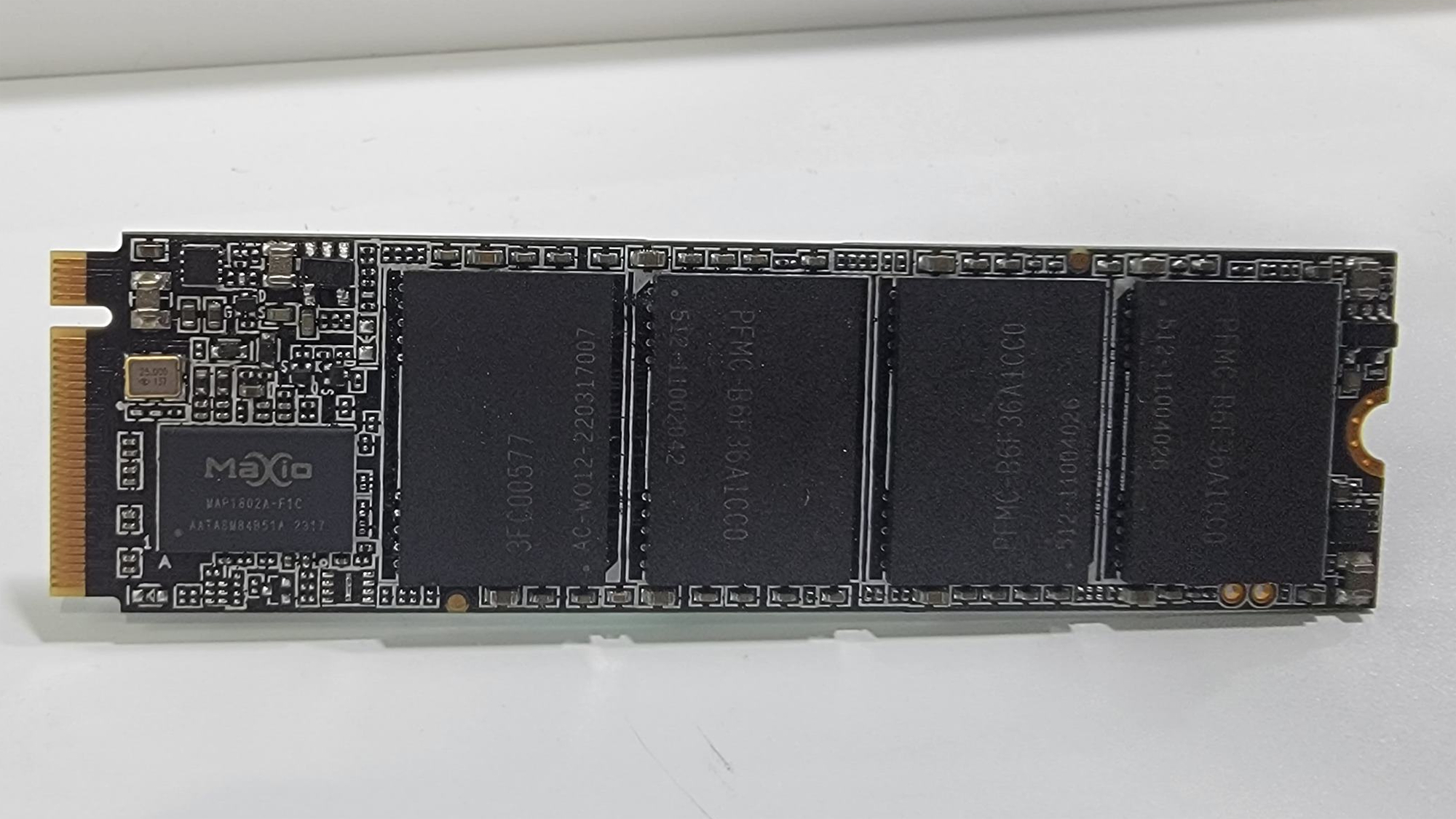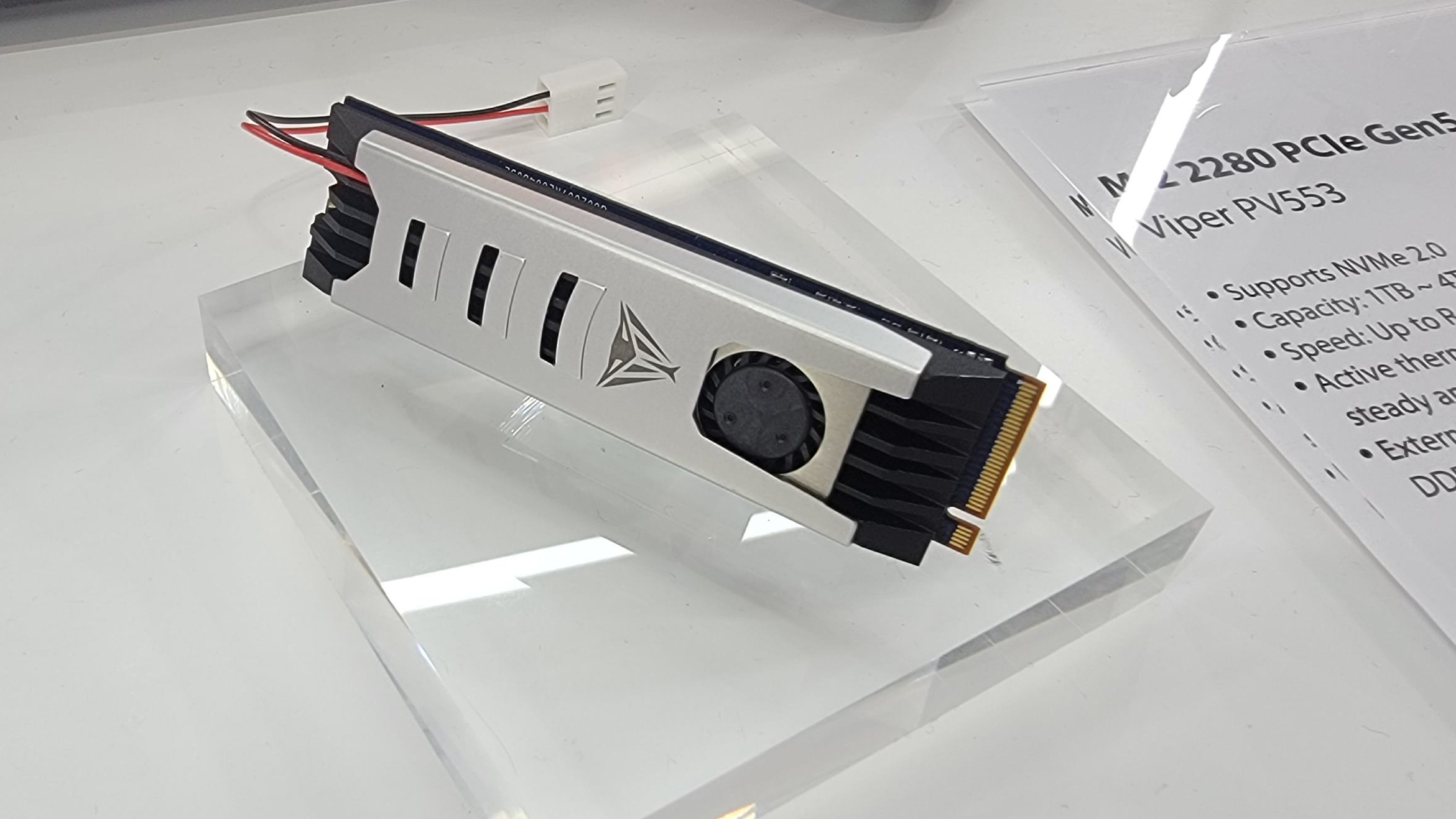Patriot Teases DRAMless Gen 5 SSD, Debuts Blazing Fast Drive with Thin Fan

The age of PCIe Gen 5 SSDs has only just begun, with the current focus being on high-performance drives that push the envelope. Just this week, we reviewed the Crucial T700 , which promises sequential read and write speeds of 12,400 and 11,700 MBps respectively but costs a whopping $339 for the 2TB model.
Over time, all Gen 5 SSDs will get cheaper, especially as NAND prices sink. However, one sure-fire way to get budget Gen 5 SSDs is to go with a DRAMless configuration. There are a slew of PCIe Gen 3 and Gen 4 drives without DRAM and, though they can't quite hit the same speeds as more expensive SSDs that have a DRAM cache, they give you a lot for your money.
At Computex 2023, Patriot Memory showed a prototype of a DRAMless Gen 5 SSD that is still pretty far away from launch. A company rep said that it could take up to a year before the unnamed drive hits the market.
We don't know the speeds or specs for the unnamed drive, but we do know about the drive is that it uses a Maxiotek brand controller and Patriot expects it to have surprisingly good performance. The rep said "we're working a lot to bring our DRAMless drives damn close to our DRAM drives."
Speaking of SSDs that have DRAM, Patriot also introduced the Viper PV553, a PCIe Gen 5 drive that has a full 4GB of DDR4 cache memory on its 2TB capacity. The drive, which uses a Phison E26 controller and speedy 2400 MT/s NAND, will be available in 1TB, 2TB and 4GB capacities starting within the next month or so.
The PV553 uses an active fan for cooling, but makes up for the potential noise by having an extremely thin profile. Patriot said that they are still refining the fan speeds so that the plastic on the heatsink doesn't degrade from the heat.



Designed to compete with the best SSDs, the Patriot PV553 is rated for 12,400 MBps sequential reads and 11,800 MBps writes, which is about on par with the T700. That makes sense since it uses the same controller.
Get Tom's Hardware's best news and in-depth reviews, straight to your inbox.
Though the unit we saw on display had a thin and not-very-attractive looking power cable, Patriot told us that it will have a connector that is black, sleeved and have a black connector you can plug into a fan header on your motherboard. There will also be an extension cable should you need to connect the SSD to your PSU.
There's no word yet on pricing for the PV553, but since it's due out next month, we should find out soon.
Avram Piltch is Managing Editor: Special Projects. When he's not playing with the latest gadgets at work or putting on VR helmets at trade shows, you'll find him rooting his phone, taking apart his PC, or coding plugins. With his technical knowledge and passion for testing, Avram developed many real-world benchmarks, including our laptop battery test.
- Paul AlcornEditor-in-Chief
-
newtechldtech SSD drives are actually small PCs ... that give you access to their storage. in Short.Reply -
cknobman I dont know if I will ever need my SSD to be so fast it has to have a huge heatsink or active cooling on it.Reply
In the past 5-7 years I cant once remember thinking "danm this pc is taking forever to boot, save, or load a program"
IMO once you have to add things like heatsinks and active cooling you've past the point of diminishing returns. -
PEnns Replycknobman said:I dont know if I will ever need my SSD to be so fast it has to have a huge heatsink or active cooling on it.
In the past 5-7 years I cant once remember thinking "danm this pc is taking forever to boot, save, or load a program"
IMO once you have to add things like heatsinks and active cooling you've past the point of diminishing returns.
Exactly!
My 10 year old PC (with Samsung 860 SATA) boots in 20 seconds. Plenty fast for me! -
MG Clark Replycknobman said:I dont know if I will ever need my SSD to be so fast it has to have a huge heatsink or active cooling on it.
In the past 5-7 years I cant once remember thinking "danm this pc is taking forever to boot, save, or load a program"
IMO once you have to add things like heatsinks and active cooling you've past the point of diminishing returns.
"No one will ever need more than 640K."

